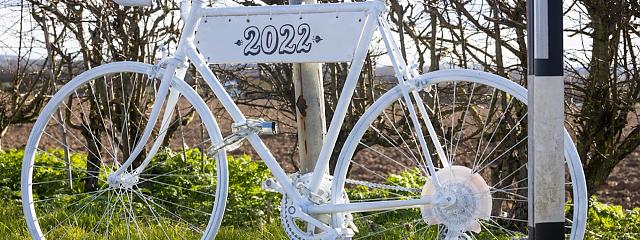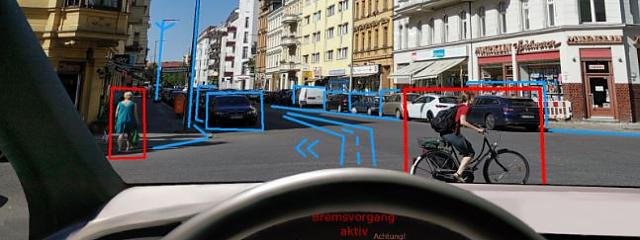
Public awareness campaigns on road safety
Public awareness campaigns on road safety
Carefully designed and targeted campaigns to improve people’s behaviour on the road can be highly effective.
For example, the sustained campaign against drink-driving, which celebrated its 50th anniversary in 2017, has evidently made a positive difference: since 1979, when detailed reporting on drink-drive collisions in Great Britain began, the number of people hurt or killed in such crashes has dropped significantly.
The campaign was and still is highly focussed, its messages are unambiguous and it’s backed up with strong enforcement. This is evidently a winning combination.
Unfortunately, the same cannot be said of all awareness campaigns relating to cyclists’ safety.
Cycle awareness campaigns
A common failing is to base cycling-related campaigns on a false equivalence between the impact of problem behaviour from people who cycle and that of people who drive.
Often inspired by an effort to be even-handed, this approach risks leaving audiences with the impression that cyclists cause as much (if not more) harm to themselves and others than drivers do.
Yet, as we explain elsewhere, cycling poses very little risk to others when compared to driving complex, heavy and potentially very fast vehicles.
To suggest otherwise is not only misleading and unjust, but also means that the campaign deflects energy from tackling the main threat: motor traffic.
In fact, the new Highway Code makes it very clear that it’s motor vehicles that cause most harm.
… those in charge of vehicles that can cause the greatest harm in the event of a collision bear the greatest responsibility to take care and reduce the danger they pose to others. This principle applies most strongly to drivers of large goods and passenger vehicles, vans/minibuses, cars/taxis and motorcycles.
Rule H1, Highway Code, England, Wales & Scotland.
In other words, cycle awareness campaigns that aren’t clear about this will always be off-target and unfit for purpose.
The right messages
Whether they’re targeting drivers’ behaviour around cyclists, cyclists’ behaviour in particular or promoting respectful and considerate road sharing, all public awareness campaigns need to:
- deliver truthful, simple and memorable messages
- be unambiguous about the imbalance in risk
- never indulge in victim-blaming
- avoid lecturing and a judgemental tone
- be informed by whatever prompts the behaviour in question
- if aimed at problem behaviour, focus on the group exhibiting it (not any other)
- if about considerate road sharing, convey positive messages to both drivers and cyclists
- never pander to the gallery by using simplistic, negative stereotypes of people who cycle
- avoid exaggerating the risks/dangerising cycling (there is no sense in putting people off a form of environmentally-friendly transport, the health benefits of which outweigh the risks).
The above check-list is important whatever form the campaign takes and for all its materials and outputs: online advice; videos; posters; banners; booklets; leaflets; and even vehicle stickers (e.g. on the back of buses and lorries aimed at cyclists).
Enforcement
As with the initiative to tackle drink-driving, robust campaigns to tackle offending behaviour help boost public support for police enforcement, a highly necessary complement.
Enforcement, which should in itself reflect the potential danger imposed on others, reinforces the campaign’s impact by punishing irresponsible drivers who ignore its message.
This synergistic interaction is essential, given evidence showing that education plus enforcement (or increased enforcement) is the best approach.
Funding
Decisions over whether or not to fund a road safety awareness campaign should be based on a realistic assessment of how much impact it is likely to have on road safety.
Again, this means being clear about who most victims are and why.
For cyclists, who are over-represented in casualty statistics, key issues for awareness campaigns are:
- Explaining the revised Highway Code, especially the changes made in 2022
- Tackling drivers’ failure to look before turning at junctions and/or roundabouts (reported road casualty statistics show that this is the most common ‘contributory factor’ assigned by police at the scene of road collision)
- Speeding
- Distraction (e.g. by mobile phones)
- Close overtaking – see Cycling UK’s own Too Close for Comfort campaign
- Opening car doors negligently – see our Dutch Reach campaign
- Explaining cyclists’ road positioning.
Audiences
To promote (and scope out) campaigns aimed at cyclists, a sound tactic is to engage constructively with the cycling community first and foremost, e.g. the cycling press, cycle trainers and cycling organisations.
Further reading
For some examples of good and bad practice for promotional and enforcement campaigns, see the case studies we collected for our submission to the Department for Transport’s Cycle Safety Review in 2018.










